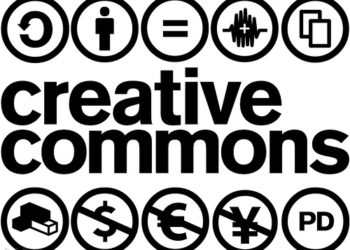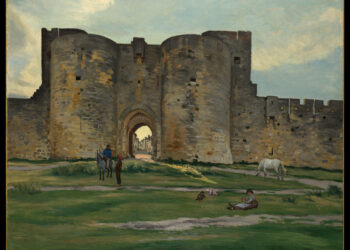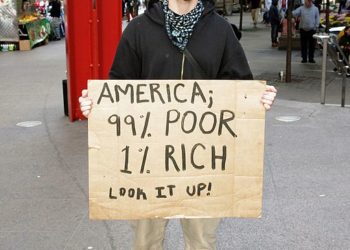In November 2013, when Judge Denny Chin dismissed the Authors Guild’s lawsuit against Google over the latter’s mass book digitization project, there was much rejoicing in the library world. In June 2014, the Guild lost again: this time in the Second Circuit Court, which affirmed the late Judge Harold Baer, Jr.’s decision dismissing another suit that it brought against HathiTrust over the latter’s publicly-searchable database of digitized book copies (most of which were created during the Google Books project). As Baer put it in his original decision, he could not “imagine a definition of fair use that would not encompass the transformative uses” made by HathiTrust.

In affirming Judge Baer’s decision, the appellate court follows the same logic as that applied by Judge Baer in his initial finding, agreeing with him on a number of major points, some of which are worth discussing briefly here.
First, libraries may take full advantage of fair use rights, despite what some (including the plaintiffs in this case) have interpreted as limitations on libraries’ fair-use rights outlined in section 108(f)(4) of the copyright law. (Baer: “Nothing Plaintiffs submitted convinces me that fair use is unavailable as a defense.” Second Circuit: “We do not construe § 108 as foreclosing our analysis of the Libraries’ activities under fair use.”) Jonathan Band, writing for the Library Copyright Alliance, characterizes the court as “hold(ing) unambiguous(ly) that libraries may take full advantage of the fair use right,” and I think he’s right in that assessment.
Second, mass digitization of in-copyright printed books, along with storage of the resulting digital copies, in itself represents fair use when undertaken by libraries. This finding may be startling to some observers, but it’s important to note that the court examined the question of digitization and storage separately from the question of access (about which, more in a moment). “We conclude that the creation of a full-text searchable database is a quintessentially transformative use,” says the ruling—not, it explains, because having the books in digital form enhances access for the print-disabled (this simply expands the very kind of use envisioned by the authors), but because it permits text-mining, which is a fundamentally different use of the books from what their authors intended.
Third, digitizing the entirety of a copyrighted book is permissible under fair use, because the transformational use described above (text-mining) is only possible if the entirety of each book is digitized. And since text-mining poses no threat to the copyright holder’s ability to sell the book as a book rather than as a searchable database of words, the court found that the substantiality test is effectively made irrelevant in the case of mass digitization.
Fourth, keeping multiple copies of each digitized book is permissible under fair use, because redundant storage is needed both for keeping web traffic balanced and for backup in the case of data loss. The court also seemed to refer approvingly (though it did not rule definitively on the issue) to the fact that digitized copies provide a potential replacement for physical copies that are “lost, destroyed, or stolen, and (for which) a replacement copy is not available at a ‘fair’ price elsewhere.”
But what about access to the digital copies themselves? That, after all, is the big question—the reason the Authors Guild got upset about Google Books and HathiTrust in the first place is its fear that making these books widely available on a digital network will undermine the market for them. In fact, both the court and the defendants seem to agree on this point: there is no question that HathiTrust intends to make these digitized books as fully accessible as possible, within the law. From the beginning, HathiTrust has been (rightfully, in my view) clear on the fact that preservation without access offers no value to anyone.
But on the important question of access to digitized copies of in-copyright printed books—what kind of access may be provided, to whom, and under what circumstances—the court punted. Or half-punted, anyway. It addressed the easiest question: that of access for the print-disabled, which means not only those whose sight is impaired, but also those whose disabilities “prevent (them) from holding a book or turning pages.” Unsurprisingly, the court held that making books digitally available to those who cannot use printed books weighed heavily in favor of a fair use ruling for HathiTrust.
On the question of broader access, the court offered little in the way of guidance. Although HathiTrust makes the text of in-copyright books available for searching, the search results do not (unlike the results in a Google Books search) return snippets of text—they show only the books in which the searched terms appear, along with information about how many times the terms occur and on what pages. According to Brand,
This three- judge panel of the Second Circuit evidently did not want to preclude the panel considering the pending appeal in the Google Books case from distinguishing the HathiTrust decision on this basis. At the same time, this panel did not suggest that snippet display renders GBS unfair. This panel simply left the question open for the GBS panel. Accordingly, we’ll have to wait until the decision in the GBS case to know whether Judge Chin’s holding permitting snippet display stands.
What will be very interesting to see, going forward, will be how individual libraries respond to this ruling—not so much in terms of their public rhetoric, but in terms of actual policies and programs. Mass digitization is beyond the capacity of many (and, depending on the degree of collection overlap, will be substantially obviated for some by the existence of Google Books and HathiTrust), but selective digitization is possible for most. Whether the potential uses identified by the Second Circuit as being fully compatible with fair use are valuable enough to prompt widespread book-digitization activities in libraries is a separate question.
Discussion
2 Thoughts on "The Authors Guild Loses (Again), and HathiTrust Wins–But What Does It Mean?"
Apparently his fellow judges can imagine that some of the uses that Judge Baer declared to be “transformative” are not so, viz., making the digitized books available to the physically handicapped. So, this is one important way in which the circuit court panel did not go fully down the road of considering transformative use to cover just about everything imaginable. But it did, unfortunately in my view, diverge from previous precedent in the Second Circuit set in the Texaco case by considering digitization itself transformative, apart from any creative uses of the digitized copies afterward. As I write in an article titled “What Does the HathiTrust Decision Mean for Scholarly Publishers?” forthcoming in the next issue of Against the Grain,”the Second Circuit Court of Appeals has abandoned earlier Second Circuit precedent and instead bought into the controversial theory of the Ninth Circuit (some of whose key decisions it also cites) on functional use. Instead of insisting on viewing the act of copying itself as needing to be creative, the court has accepted the Ninth Circuit’s idea that an otherwise “mechanical” act (similar to use of a photocopy machine) can be fair use if it ‘allows for’ (the key words used by Judge Chin in his ruling in the Google case) creative use later. . . . Of course, someone had to be creative in devising the process for mass digitization, just as someone had to create the photocopy machine in the first place, but the actual use of the process or machine is certainly not an act of human creativity itself, compared with the paradigm case of a scholar quoting from a previous work in the act of creating a new interpretation. The Second Circuit, with this new decision, has now effectively repudiated that line of reasoning and imported the Ninth Circuit approach. In my view, this strikes a terrible blow to the conceptual clarity of the notion of fair use. Now courts will have to be engaged in an endless procedure of differentiating among a variety of functional uses as to which can be considered to comport with fair use.”
But I go on to say: “However, the news is not all bad. In particular, the HathiTrust decision on appeal has challenged the notion that social utility itself suffices to render a use fair, in this respect echoing Judge Newman’s reasoning [in the Texaco case].
Contrary to what the district court implied, a use does not become transformative by making an ‘invaluable contribution to the progress of science and cultivation of the arts.’ … Added value or utility is not the test: a transformative work is one that serves a new and different function from the original work and is not a substitute for it.
In this respect, the Second Circuit seems to be departing a bit from the Ninth Circuit approach, which famously proclaimed functional utility of a search process in the Perfect 10 case to be even more transformative than parody. ‘Google’s use of thumbnails is highly transformative’ (emphasis added).”
It will be very interesting to see how the Second Circuit panel in the Google case sorts through this conceptual morass, especially since Judge Pierre Leval, who originated the idea of “transformative use” in the first place, sits on that panel.
Reblogged this on DailyHistory.org and commented:
Rick Anderson has an insightful blog about the recent Second Circuit Court decision, Authors Guild, Inc. v. HathiTrust. The Court dismissed a lawsuit brought on behalf of the Authors Guild and affirmed the right of libraries to create searchable databases of digitized books under fair use.
The Guild’s lawsuit was always problematic because Hathi and Google never intended to make books under copyright freely available in a digital form. If Hathi or Google did so, they would be violating the copyright law and open themselves to massive penalties under copyright law. Therefore, the Guild has essentially been objecting to the existence of these databases and the ability of people to do word searches in these books. If anything, these databases may encourage people to buy books. I have bought books after doing a word search on google books and I imagine I am not the only one. While it is unlikely, I hope that the Guild stops wasting its resources fighting creation and maintenance of these databases.



